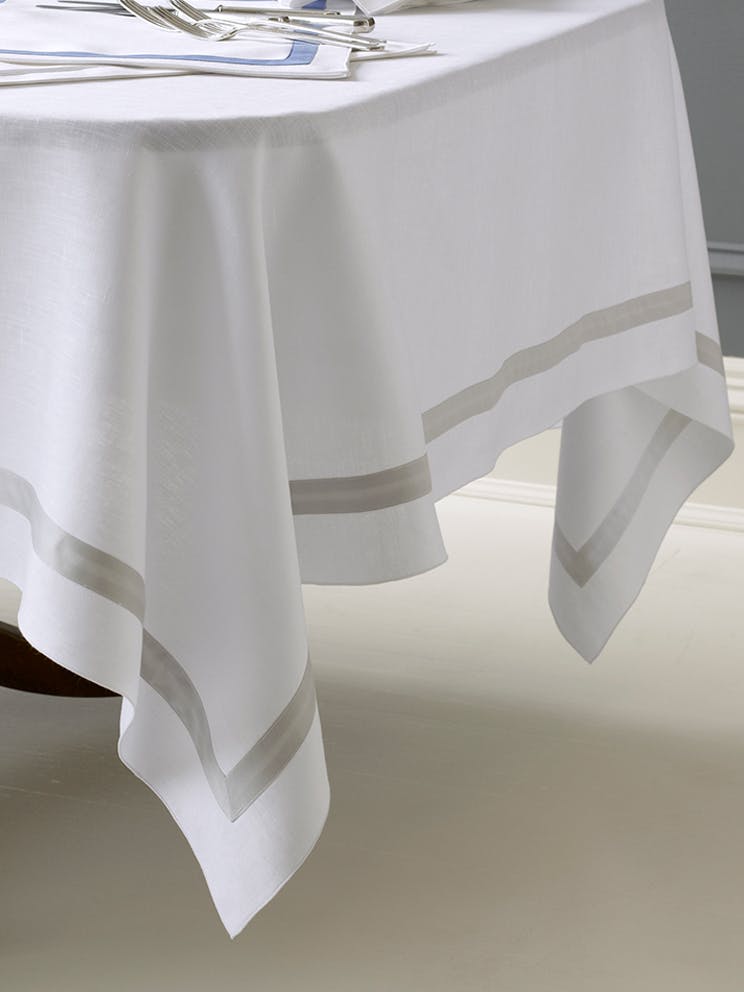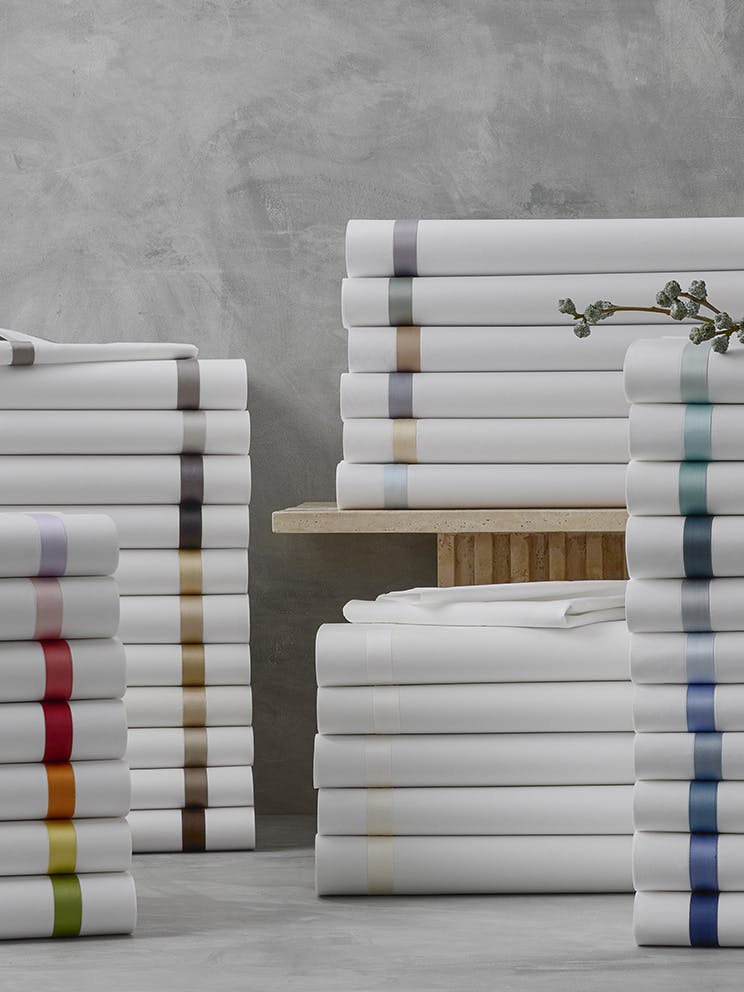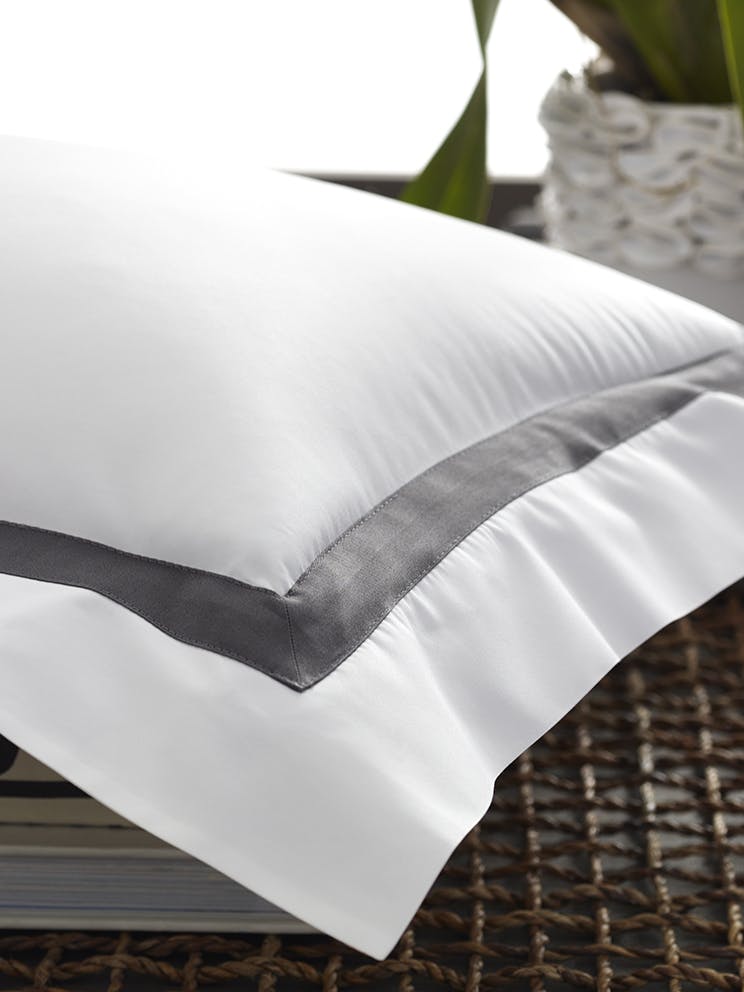[Edited version - originally posted on July 28, 2016]
Baking in the sun may not be good for you and me, but there′s one thing that should hang out in the sun all day: your sheets and various other fine linens. Not only is it a solar-powered way to dry laundry, it also has a natural brightening effect on sheets and table linens. Plus, linens come off the line smelling summery fresh.
But these aren′t the only benefits to line-drying your linens. Air drying is also good for the textiles themselves, causing less wear and extending the life of the linens you love. Below, we offer 10 helpful tips for line-drying your fine linens, because spring and summertime is the right time to seize laundry day.
1. Give your dryer a rest
Hanging sheets to dry can help avoid minor shrinkage and wrinkling, giving your favorites a longer shelf life. "Line-drying prolongs the life of both your clothing and your linens," says Cindy Bogart, founder of Artisans List and a former editor at Better Homes & Gardens. "The heat and tumbling in the dryer are abusive to fabric and, over time, you will see the wear."
2. Save some energy
Dryers are energy hogs, and their output is doubly troubling in summertime, when adding heat to your home′s interior is the last thing you want to do. Save energy and money (and lower your carbon footprint, too), when you hang laundry to air dry. Plus, why spend time fussing over just the right scent of laundry detergent when you can get that summer fresh scent for free?
3. Say so long to ironing
Yes, some people do still iron their sheets. If you′re one of them, line drying can save you some time. "However you hang your laundry is how it will dry," explains Cindy. "If you love your sheets pressed, line drying almost presses them perfectly." Kill two birds with one stone when you hang yours neatly in the sun, and negate the need to pull out the iron.
4. Perfect the non-press process
If you like your sheets to look flat and smooth, pay attention to the return – that part of the flat sheet that gets folded over – advises Liz Barbatelli, owner of E. Braun & Co. in West Hollywood, California and The Laundry at Linens Limited, a fine laundry and restoration service in Milwaukee. "The return gets all crumpled if you aren’t careful," points out Liz, a line-drying devotee. "I reshape the embroidery or the appliqué band, fold the sheet in half, and place it neatly over the line, being sure to smooth the corners."
Liz has a process for shams and pillowcases, too. "Take the two corners of a sham or pillowcase and line them up, smooth them, and pull them into a nice, neat-looking piece so that the corners are lined up and it’s smoothed out,″ she advises, ″then lay it over the line.″
5. If you do iron, leave linens damp
If you insist on ironing after your sheets are line-dried, that works too. Just be sure to pull items off the line before they dry completely. "When fibers are wet, they will stretch and, as they dry, contract,″ offers Liz. ″If you′re ironing something that’s damp, you are not trying to take a fiber that’s already contracted. You are taking a fiber that′s more elastic because it’s still damp, so it irons more easily."
6. You can line dry table linens, too...
Because heat shrinks fibers, your table linens will retain their shape better if you line dry them. "I inherited all of my grandmother's Italian table linens, and I line dry them until they are damp," says Cindy. "If I have time, I press them immediately.″ If she′s short on time, she′ll lay damp linens flat atop each other, then roll them into a cylinder and place them in ″a non-food section of the freezer or refrigerator″ until ironing day. ″They come out fantastic!"
7. ...But toss towels in the dryer
Towels don′t fare as well on the line. There′s nothing on the care label that says you can't air dry them, but nothing fluffs them up like a good turn in the dryer. When you line dry towels, "they come out like cardboard," says Cindy. You need the heat to make them plush.
8. Choose a clothesline carefully
One top tip for making sure line drying doesn′t go awry? "Use a plastic line or something that’s coated,″ advises Liz, ″or else use a drying rack. You want to use a line that isn’t going to have any color transfer." And if you’re drying outside, don’t forget to watch the weather.
9. No clothesline? No problem.
If you don′t have a yard or a clothesline, you've still got options. "How do you think they did it when there weren't dryers?" asks Cindy. We recommend The Container Store for some great space-saving options. "When I was growing up, in the winter my mom used a triple clothesline rigged in the laundry room in the basement," recounts the green living enthusiast. "Since the boiler room was close by, the space was always warm and it dried everything really nicely."
10. Be a good neighbor, but hold your ground, too.
We see line drying as an elegant and nostalgic act – what says home-sweet-home better than beautiful, sun-kissed linens blowing in the breeze? Of course, not everyone pictures this time-honored tradition the same way. You may have neighbors that won't appreciate the view. If that′s the case, play nice, but remind them of the benefits that line-drying brings. "Today, the name of the game is living a cleaner and greener life," says Cindy. "I would hope neighbors would respect that line drying your clothes is in deference to that."












